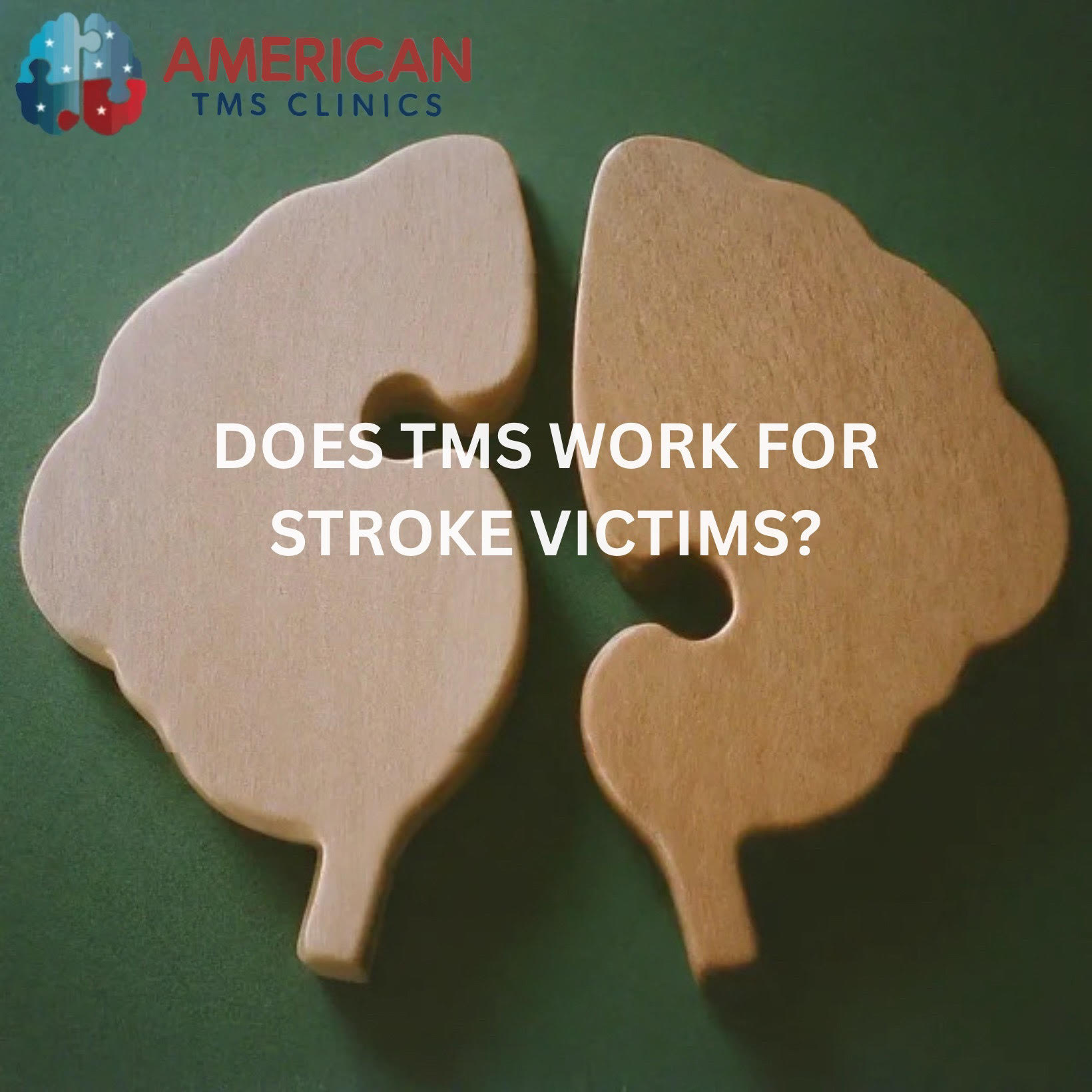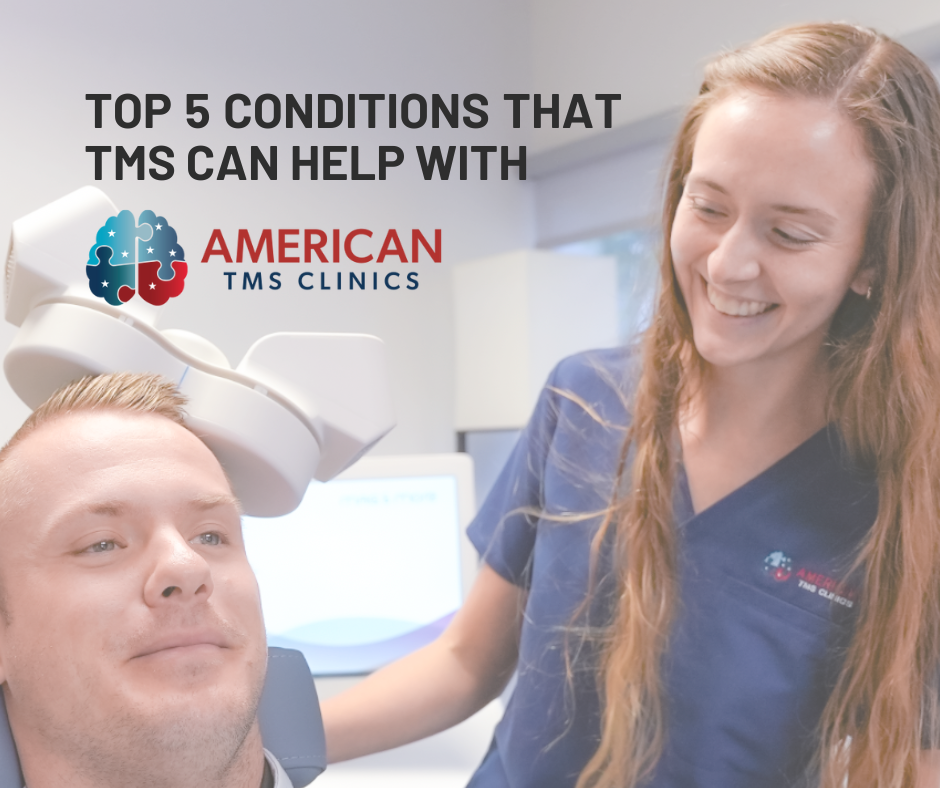With the rise in mental health disorder prevalence, people are increasingly seeking out therapies that treat the root of the problem, rather than just managing symptoms. Transcranial Magnetic Stimulation (TMS) is a mental health treatment that does exactly that! TMS can be used for a variety of mental health disorders, and studies show that it is highly effective. In fact, the results and benefits are often comparable or even better than other common treatment modalities2 while also being very safe and producing minimal side-effects. But there are a lot of misconceptions and questions people have about TMS. How does TMS work? How does it promote mental health? Do we actually know everything about how TMS alters brain activity?
In this article, we will explore the answers to all of these questions so you are equipped with the knowledge you need to decide if TMS therapy is right for you!
Magnetic Fields and Pulses
TMS produces an electromagnetic field by passing a rapid electric current through a special electromagnetic coil. This generates a brief, high-intensity magnetic pulse that passes through the skull and into the brain to stimulate neurons1. This form of stimulation works to change brain activity because the brain produces its own electromagnetic field. By stimulating the brain at specific frequencies (Hz) and intensities we can tell the brains electromagnetic field to slow down or speed up in the desired location3.
Researchers believe that by changing the brain’s electromagnetic field it also helps trigger the production and release of important brain chemicals like serotonin and dopamine. These chemicals play key roles in mood regulation, pain perception, and other important brain functions.
Although scientists are still working on fully understanding the therapeutic effect of TMS at a molecular level, we do know a couple other very important effects that it produces.
Neuroplasticity and Neural Habits
The magnetic pulses delivered by the coil also create a window of time where the patient is more receptive to change. This window is called “neuroplasticity” and means that after TMS, your brain can change more quickly and efficiently3. This process actually creates new connections between neurons in the brain and can even create entirely new neurons. This is why it is often recommended to pair TMS with other treatment modalities such as talk-therapy to positively reinforce the newly forming connections.
A TMS treatment program typically consists of 36 sessions. Over time, the brain gets accustomed to the electromagnetic pulses and functioning at this frequency. This ingrains a “neural habit,” which produces long-term relief from depression symptoms3. In the scientific community, we call this process of instilling a neural habit, Long-Term Potentiation (LTP)3. This process is accelerated by the state of neuroplasticity that TMS creates.
You can think of it as similar to learning any other habit such as playing piano. When you practice piano for the first time, it would feel as though your hands and fingers aren’t moving with the speed and precision you may want them to, and every movement has to be conscious and intentional.
By the 36th time that you practice piano, it would feel much more natural and some of the movements would even become automatic “muscle-memory.” In a similar way, the neurons that are consistently stimulated in the target area would become habitually accustomed to firing at the same rate as the magnetic pulses. This would result in the brain functioning automatically in a more regulated way, creating a reduction of depressive symptoms. This is why TMS is said to treat the root cause of depression, rather than merely treating the symptoms3.
How Does TMS Work in a Real Life Scenario?
Lets say a patient presents with Depression and is diagnosed accordingly. Firstly, before beginning treatment, we must find the target area for depression. By conducting cranial measurements that are tailored to each individual’s unique brain, we locate the area most commonly associated with depression. This area is in the frontal left hemisphere (aka L-DLPFC).
The magnetic coil is then placed directly on the target area and the coil begins inserting electromagnetic pulses. In the case of depression, the specific rate of pulse is 10 Hz (10 pulses per second), and lasts for a total of approximately 18 minutes. 10Hz is a frequency range that we call “Alpha” which is used by the brain for a variety of processes including memory, cognition, problem solving, creative thinking, and more. Essentially, by inserting pulses to the target area at a frequency that produces cognition, we train the target area to be more active and involved in whole-brain processes.
Also, each person’s unique brain requires a different intensity of pulse to get the same level of stimulation in their neurons. By determining the patient’s “motor threshold” we can find out how much stimulation is minimally necessary to create a response from the neurons. From this, we determine the strength of pulse that produces an optimal level of stimulation. We also take the patient’s comfort level into account so that the intensity is never too uncomfortable.
By approximately the 9th session, the patient would likely begin to see noticeable changes resulting from their newly forming neural habits. What happens within the brain also affects the patient’s subjective experience of life. The experienced difference could be that when the patient came into TMS therapy, they were experiencing habitual, self-deprecating thoughts. By the 36th session, they may notice that they automatically think more highly of themselves and no longer experience automatic negative self-esteem or intrusive thoughts. This is just one way that these neural habits can change the way you think, the process is different for everyone!
How does TMS work for mental health conditions other than Depression?
Although different mental health disorders have different statuses of approval (see our other blog for more information on FDA Approved, Off-Label, and Experimental uses of TMS), they all operate on similar principles. The area responsible for the dysregulation is targeted, the pulses are inserted at a frequency that trains the area to be more normalized, and over time, the brain circuits that are stimulated ingrain a neural habit.
In Summary…
TMS works by delivering an electromagnetic pulse to a the area that is responsible for the mental health disorder in question. This pulse stimulates the area and regulates it to a specific pattern of activity. Over time, your brain learns this pattern and begins to integrate it into your daily, automatic functioning. Unlike many other treatments, this creates lasting results that don’t just change what you think or feel, but how you think and feel.
For more information or if you would like to try out TMS, contact us using the information at the bottom of the webpage to schedule your intake appointment today!
References
- Mayo Clinic. (2023). Transcranial magnetic stimulation. Mayo Foundation for Medical Education and Research. https://www.mayoclinic.org/tests-procedures/transcranial-magnetic-stimulation/about/pac-20384625
- Loo, C. K., & Mitchell, P. B. (2005). A review of the efficacy of transcranial magnetic stimulation (TMS) treatment for depression, and current and future strategies to optimize efficacy. Journal of Affective Disorders, 88(3), 255–267. https://pmc.ncbi.nlm.nih.gov/articles/PMC2993526/
- Andrade, P., & Nobrega, J. N. (2014). Transcranial magnetic stimulation for treating depression: A review of the acute efficacy and the maintenance of response. CNS Neuroscience & Therapeutics, 20(1), 1–9. https://pmc.ncbi.nlm.nih.gov/articles/PMC4468834/




Leave feedback about this